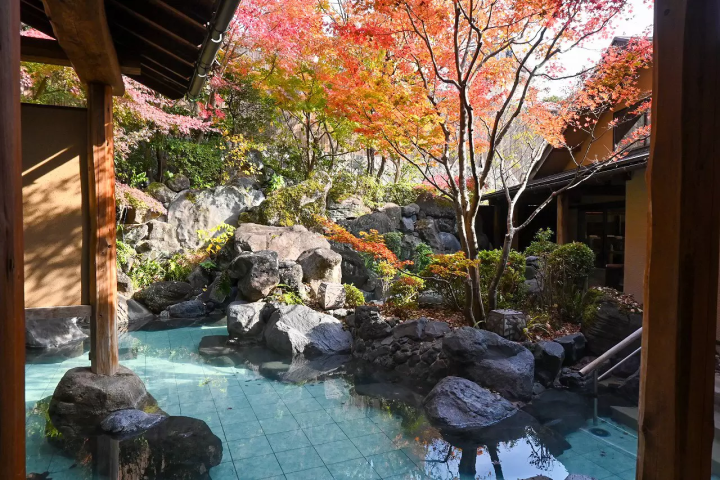Nikko Toshogu Shrine: Highlights of Japan's 400-Year World Heritage Site

Nikko, home to several World Heritage sites, is a popular travel destination all year round. This article provides an in-depth guide to Nikko Toshogu Shrine, a UNESCO World Heritage Site famous for its golden gate and elaborate wooden carvings.
Nikko Toshogu Shrine: Honoring Shogun Ieyasu Tokugawa
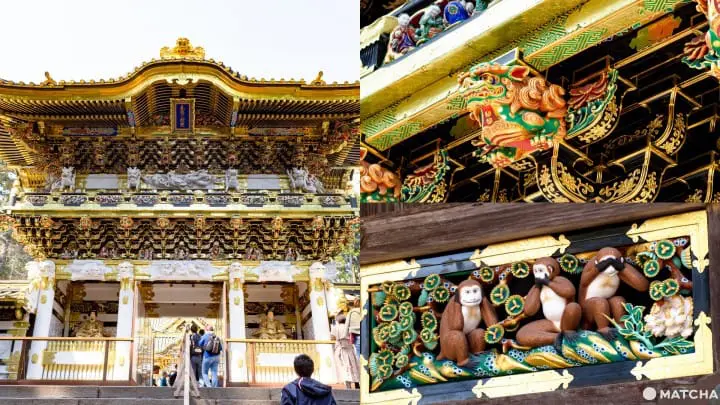
Nikko is a popular travel destination all year round. Nikko Toshogu Shrine is a highlight of the sightseeing location.
You may have seen the elaborate shrine pictured in a travel guide. As the burial site of Japan's military hero Ieyasu Tokugawa, the Toshogu has had a significant influence on Japan's history and culture.
This article covers Toshogu's history, its standout features, and what visitors can do at this renowned site. We hope this will enhance your visit to the shrine.
Ieyasu Tokugawa: Military Leader and Politician
Ieyasu Tokugawa (1543-1616) is remembered in Japanese history as the military hero who brought an end to a century-long age of wars.
In 1603, he was appointed shogun and founded the Edo Shogunate, which governed Japan for the next 200 years. From sushi to ukiyo-e, many of the cultural aspects known today started under this regime.
The reason Tokyo is so prosperous is also thanks to Ieyasu, who moved the capital to Edo (modern-day Tokyo).
The Meaning of "Toshogu": Light from the East
Ieyasu is buried and enshrined at the Toshogu. The name of the shrine means "the shrine shining from the east." According to tradition, Ieyasu became a kami (Japanese deity) after his death and watches over the Japanese islands from the east.
The construction of the Toshogu was commissioned by Ieyasu's son and successor Hidetada. The original shrine was a lot simpler than it is today.
Ieyasu's grandson, Iemitsu, led the construction of the current elaborate structure between 1634 and 1636.
The shrine has been an important center of religious devotion ever since.
Its magnificent architecture, religious significance through history, and representation of Japan's unique faith expression were recognized in 1999, when the Toshogu was deemed a UNESCO World Heritage Site.
The Highlights of Nikko Toshogu Shrine
From the entrance to the rear shrine, the Toshogu is connected by a single route. We will now introduce the shrine's highlights as you would come across them on the veneration route.
1. Stone Torii
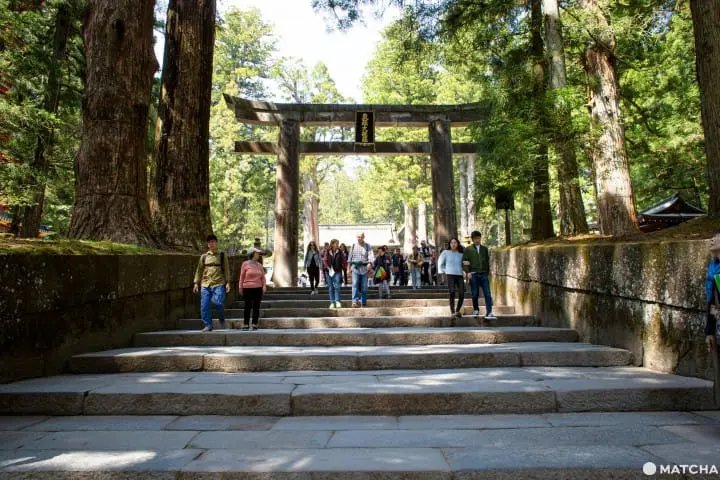
A stone torii marks the entrance to Nikko Toshogu Shrine. Found at Shinto shrines, a torii symbolizes the entrance to a sacred place.
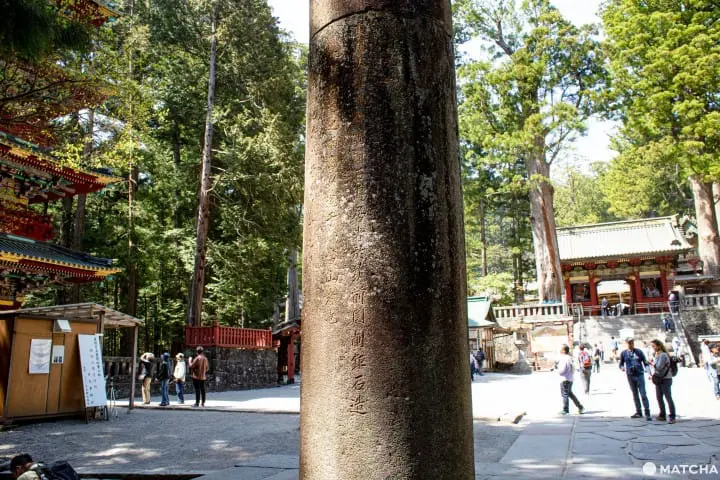
If you walk up to the torii, you will see words inscribed on it. The inscription records when Nagamasa Kuroda, daimyo (feaudal lord) of the region that is present-day Fukuoka, brought the stones from his land to dedicate to the shrine in Nikko.
The distance from Fukuoka to Nikko is an incredible 900 kilometers. The inscriptions attest to the reputation Ieyasu had among the feudal lords.
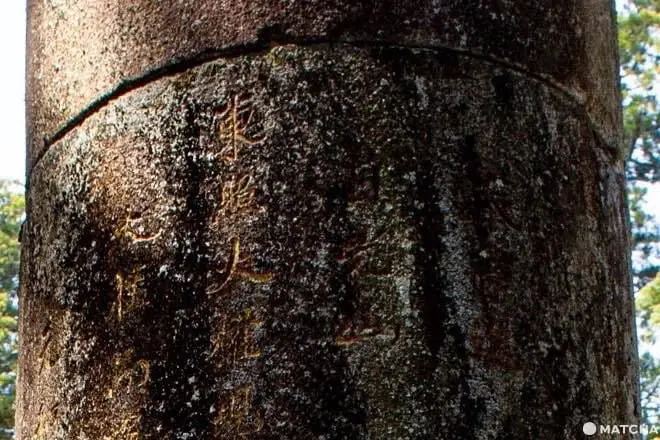
A stone torii is made using numerous stones. The division pictured above is actually where one stone was laid upon another. This method was employed to mitigate damage during earthquakes.
2. Five-Story Pagoda
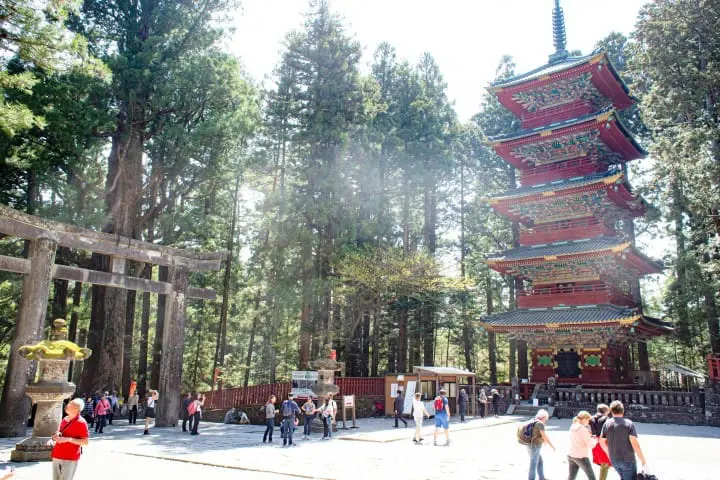
Pass through the torii and you will see a five-story pagoda to your left (pictured on the right side of the photo above). These pagodas serve as tombs for the Buddha in Buddhist temples.
A sight to behold, this impressive structure is usually crowded around by many visitors taking photos.

Look closer under the eaves of the first story. You will see carvings of animals.
These are the animals of the zodiac. Each side depicts three animals, with a total of twelve animals.

The zodiac animals on the front of the tower--tiger, rabbit, and dragon--are said to belong to Ieyasu and his descendants.
Tiger: Zodiac sign of Ieyasu
Rabbit: Zodiac sign of Ieyasu's son, Hidetada
Dragon: Zodiac sign of Ieyasu's grandson, Iemitsu
If you keep your eyes open, you will spot their zodiac animals at other places throughout the shrine grounds.
3. Shrine Gate
In order to see more of the shrine, you will want to purchase a ticket.
Head over to the shrine's entrance gate to pay the entrance fee. It is 1,300 yen for adults and high school students, and 450 yen for elementary and middle school students.
After you've paid, you will pass between a pair of Nio (*) statues, which are found in many Japanese temples.
*Nio is a dharmapala, a Buddhist deity that guards temples.
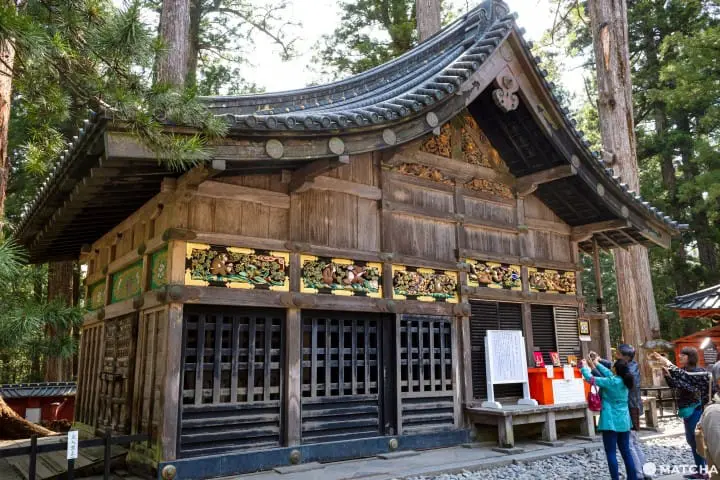
If you walk through the front gate and turn left, you will see the Shinkyusha, which means Divine Stable. It is said that horses, which were considered divine, were housed here or that Ieyasu kept his personal horses here.
Unlike the rest of the Toshogu, the Shinkyusha stands out with its simple wooden structure.
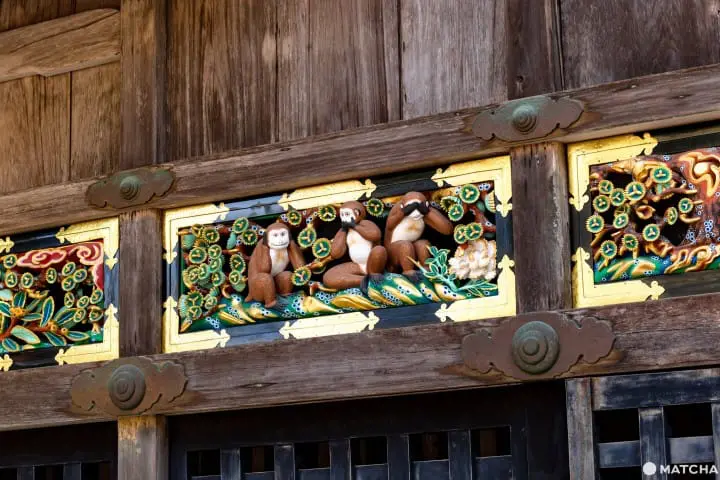
Whimsical carvings of monkeys can be seen along the beam of the stable. Since monkeys were believed to be protectors of horses, they were created as a prayer for the horses' safety.
Particularly famous are the three wise monkeys who see no evil, hear no evil, and speak no evil. A crowd of visitors will usually be taking photos.

It is said that these carvings start from the top left and represent human life.
For example, pictured above is a scene of a young person's encounter with love. As the grown monkey finds a partner, the two journey through life's struggles together.
We recommend envisioning a story as you follow the monkey's life.
4. Torii

Pass the Shinkyusha and you will come to the Omizuya. Wash your hands and mouth before proceeding ahead.
Although shrines will always have a temizuya for purification, the Omizuya was the first to install a roof over washing area.
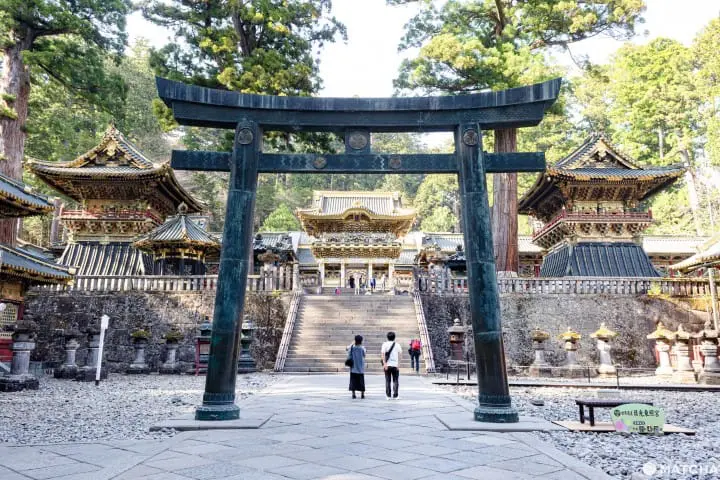
Past the Omizuya is another torii, from where you can see both the Yomeimon and Karamon Gates.
We recommend adjusting your height to that of 17th century people (around 155 cm) for the best view.
5. Yomeimon Gate

Perhaps the most famous structure in the Toshogu is the Yomeimon Gate. The contrast of gold and white is a signature feature of the gate. A remarkable 240,000 sheets of gold leaves have been used, exceeding the 200,000 sheets used on Kyoto's Kinkakuji Temple. This splendor displays the Toshogu's incredible luxury and wealth.
Due to its breathtaking beauty, the Yomeimon Gate is also called the Higurashi-no-mon (literally, Day Gate), as visitors can gaze at the gate from sunrise to sunset, and still be mezmerized.
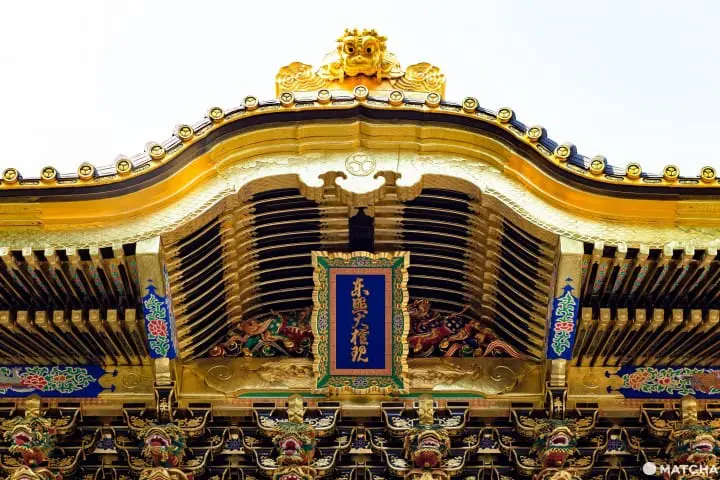
At the top is written Ieyasu's divine name, Tosho Daigongen. The words were witten by Emperor Go-Mizunoo (1596-1680) who reigned when the shrine was constructed.
If you look closely, you will see detailed carvings and embellishments. Nearly all of the human and animal carvings are a prayer for peace.
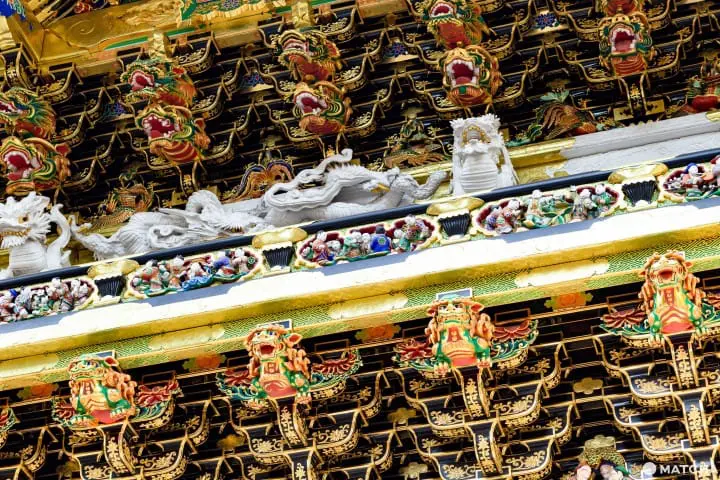
Among the carvings are those of zuijus, mythical creatures such as dragons that only live in the realm of peace.
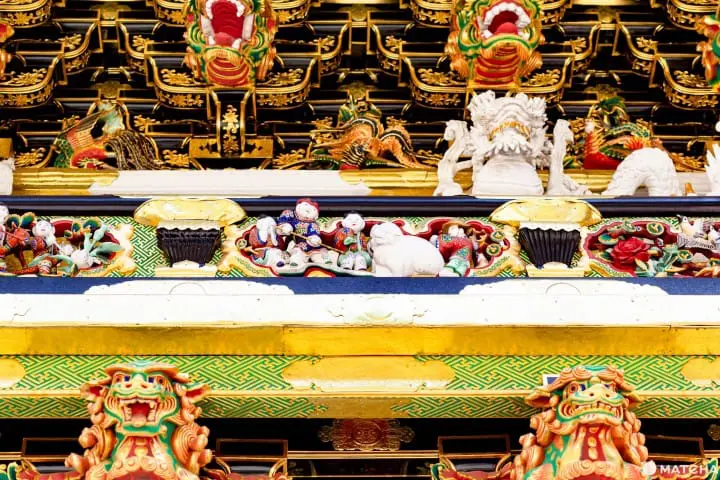
The picture above prays for a peaceful world in which children can play freely.
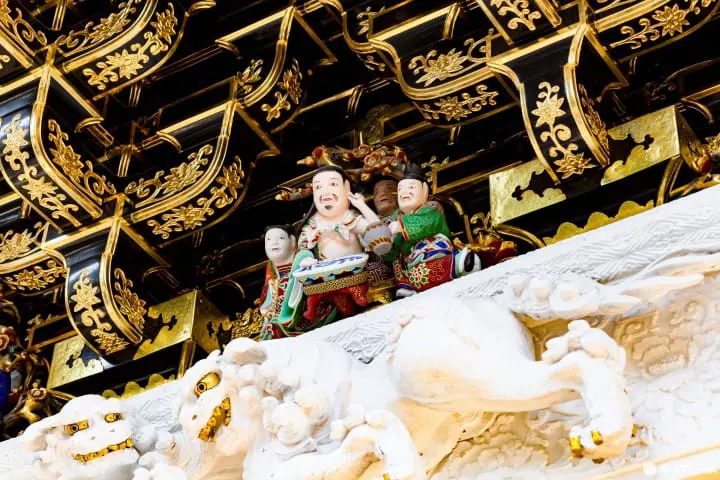
The carved statue depicts the Duke of Zhou, an ancient Chinese politician. He listens to the voice of the people as he washes his hair.
Ancient Chinese politicians and monarchs who ruled in peace are also carved.
6. Karamon Gate
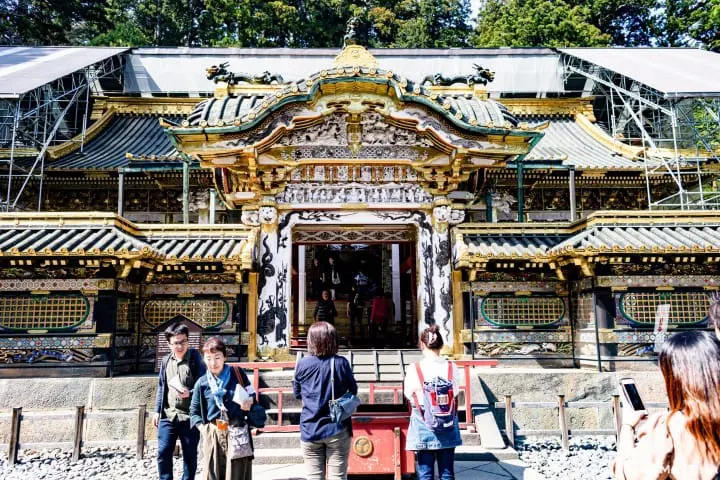
The Karamon Gate is situated directly in front of the haiden (prayer hall). The arched roof is its signature.
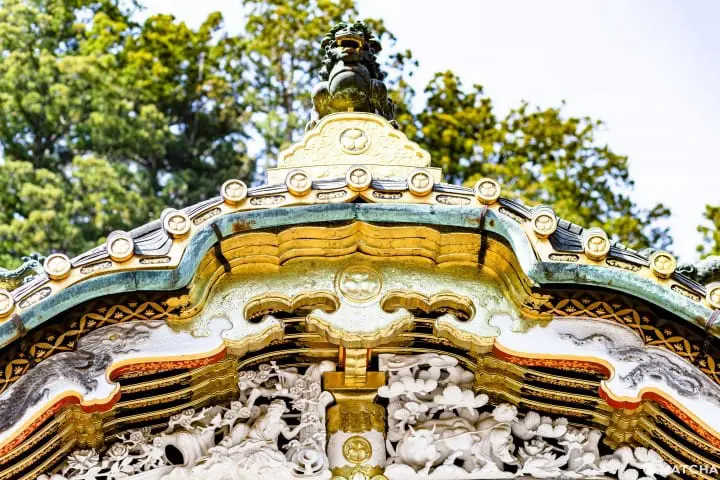
Atop the roof is a tsutsuga, a sacred beast that possesses more power than a lion or a tiger. The tsutsuga is said to protect the Toshogu at night.
The tsutsuga statue is fixed onto the roof by a golden tripod. This is to keep the protector of the night from departing.
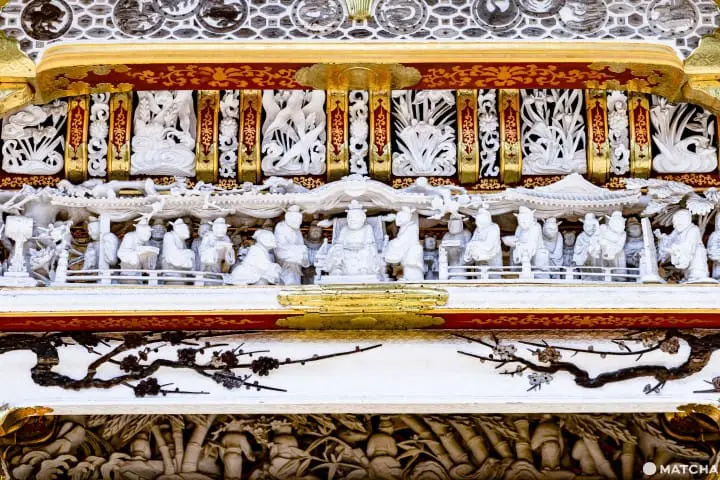
Seated in the center of the gate is the statue of the legendary Chinese emperor Shun.
In East Asia, Emperor Shun has been revered as the ideal monarch. His statue speaks to the Tokugawa regime's desire to perfect their government.
It is said that the face of Emperor Shun was made to resemble Ieyasu.
7. Main Shrine
The main shrine is where people come to offer prayers and is used for various rituals. It is one of the most important elements of the Toshogu. As such, photos are not permitted.
Moreover, since the main shrine is a highly sacred space, visitors are expected to pray in silence.
8. Nemuri-Neko
Ieyasu is enshrined in the rear shrine located north of the main shrine. To reach the rear shrine, you must walk down a hall on the east side of the main shrine and up 207 steps in a forest.
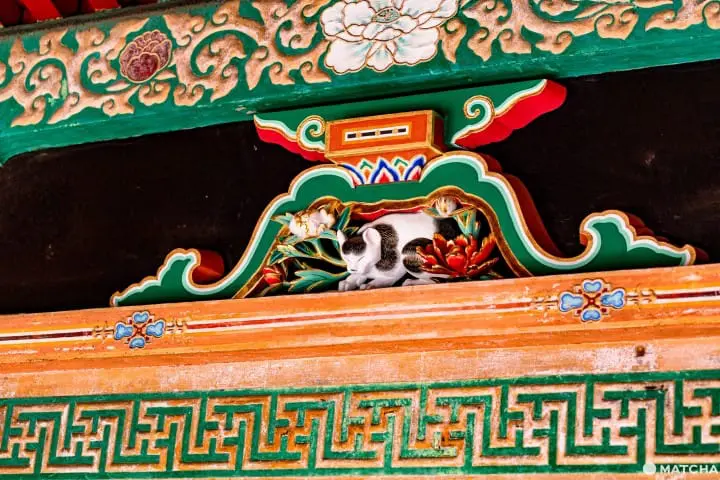
As you near the rear shrine, you will see the famous carving of the Nemuri-neko, or Sleeping Cat.
Tradition says that the cat symbolizes a prayer to keep rats out or to manifest a peaceful world in which cats sleep and sparrows (carved on the other side) fly freely.
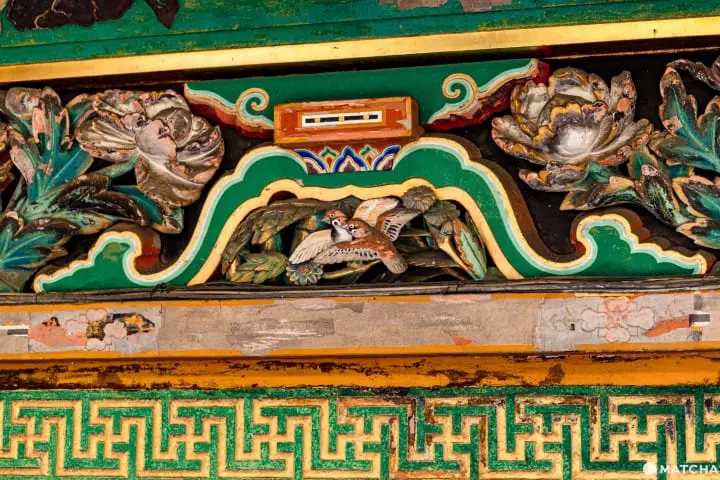
On the other side of the Nemuri-neko is a carving of a sparrow.
The area around the Nemuri-neko is often extremely crowded, so it may be difficult to spend much time admiring it. Be sure not to miss it!
9. Rear Shrine

After passing under the Nemuri-neko, walk to the rear shrine where Ieyasu is enshrined.
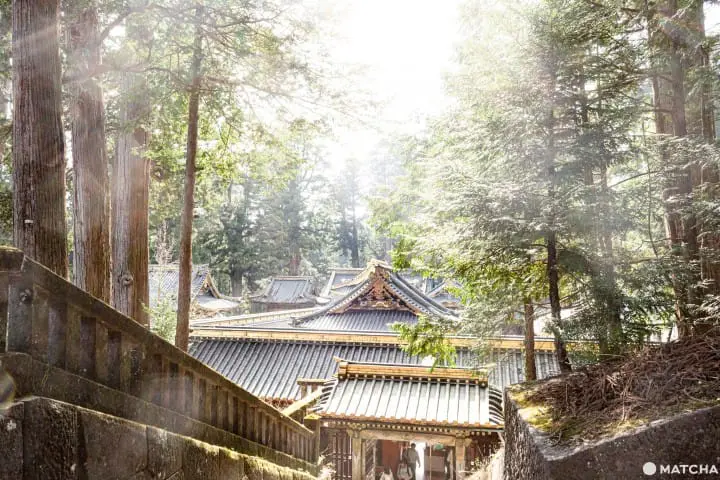
If you visit earlier in the morning, you can enjoy a tranquil stroll through the mountain forest.
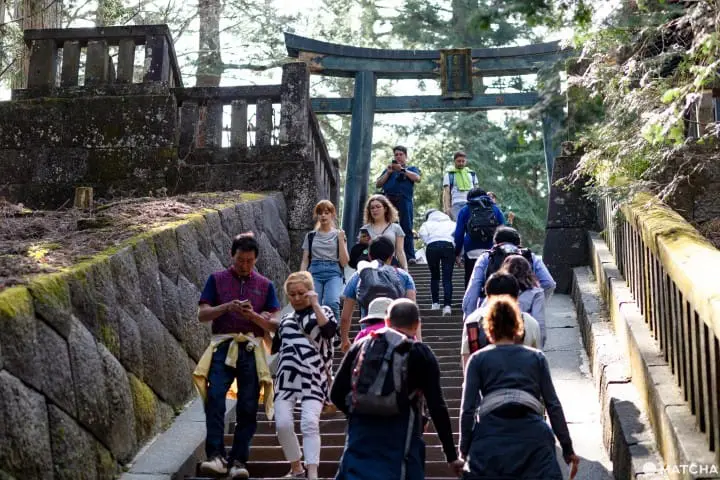
When you see the torii, you are close. For those who feel fatigued or have a hard time walking, do not rush and take your time as you walk up to the shrine.

Once you reach the top of the steps, the prayer hall will be in front of you and beyond that will be Ieyasu's burial place. A number of benches and vending machines are in the area, so you can take some time to rest up.
The front of the prayer hall is painted with black lacquer. It is the most expensive lacquer used in the Toshogu, and thus conveys a sense of austerity.
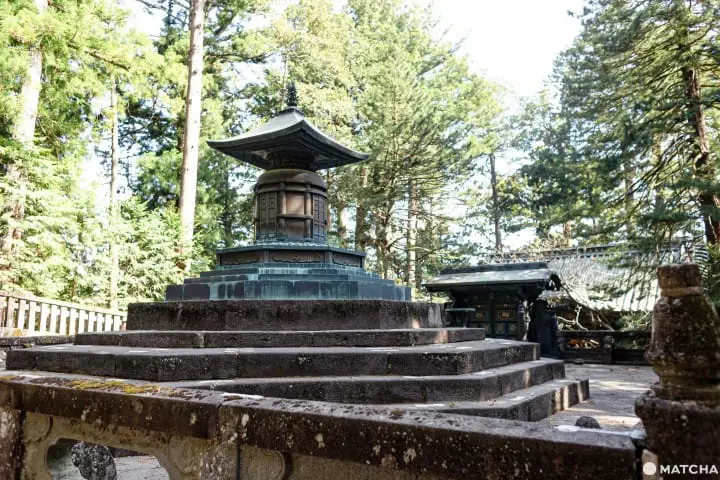
Ieyasu's resting place
In stark contrast to the extravagant Yomeimon and Karamon Gates, the rear shrine is filled with an air of a solemn sacredness. Since the rear shrine was only opened to the public in 1965, it used to be a highly sacred space reserved for certain individuals.
Experience the sacredness of the place as you offer your prayers.
10. Museum and more
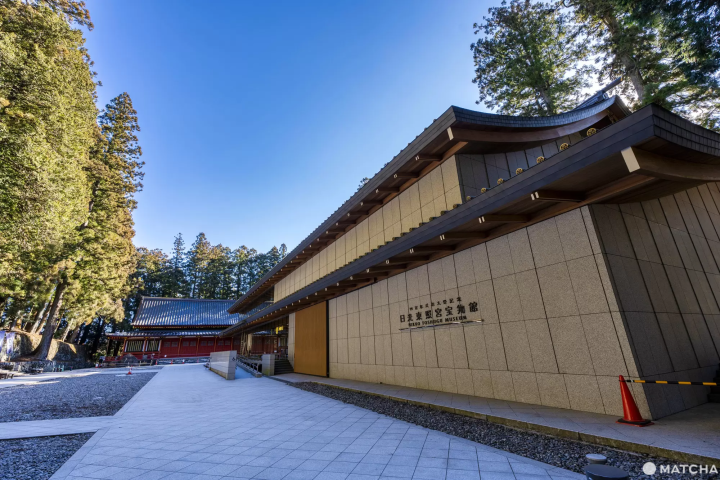
Let’s take a look at three more areas on the grounds of Nikko Toshogu Shrine. This can further deepen your knowledge on the history of Toshogu Shrine and Tokugawa Ieyasu.
1 Toshogu Treasure House
Here you will find swords, portraits and other precious treasures of Tokugawa Ieyasu. This treasure house stores and exhibits votive offerings from the imperial court, shogunate families, and feudal lords, as well as ritual implements of the shrine. In the Toshogu Theater, an 8-minute virtual reality video of the Yomeimon Gate is shown. Although the video is only in Japanese, it is still very interesting to watch.
2 Toshogu Art Museum
In addition to the partition paintings on cedar doors and sliding panels in the former shrine office, 100 Japanese paintings including hanging scrolls can be viewed. Visitors can appreciate « Choyo-no-Zu » or Morning Sun by Yokoyama Taikan, a master of the Japanese painting world. Yokoyama Taikan revolutionized modern Japanese painting by creating a new style at the end of the 19th century. The museum itself is remarkable, built in a modern Japanese style in the early Showa.
Admission: Adults and High school students 800 yen, Elementary and Junior high school students 400 yen
3 Butokuden, Nikko Toshogu
Before the end of World War II, martial art tournaments held here included kendo, judo, archery, sumo and other arts, and were large events gathering more than 2000 practitionersfrom the Kanto area and other regions, and held 15 times before being cancelled due to the war. Under the Occupation after the war, various martial arts were banned, but in 1952 the All Japan Kendo Tournament was held, which led to the establishment of today’s All Japan Kendo Federation.
Toshogu Budokuten is thus called « the place where kendo was revived after the war », and is registered as a Tangible Cultural Property of Japan in recognition to its history and architectural beauty.
Admission: Free
Accommodation : Toshogu Koyoen
Directly run by Toshogu Shrine, this accommodation offers « time to feel free» and « time to heal » in a new « ryokan+hotel » style. There are three types of guest rooms: Western-style, Japanese-style, and Japanese-Modern (a blend of Japanese and Western styles) with all rooms having baths and toilets. In addition, guests can enjoy natural hot spring containing radium ore in the ceramic bathtubs, that will warm both body and mind. The alkaline hot spring water makes the skin super smooth.
As there is a wedding hall, couples dressed in kimono at a Japanese wedding ceremony may be spotted depending on the day.
Address: Tochigi, Nikko-shi, Seo, 1640-14
Access: 10 minutes by car from Nikko Station and 15 minutes by car from Nikko Toshogu Shrine. Free pick-up service is available at both accommodations.
Unique Plants and Embellishments at Nikko Toshogu Shrine
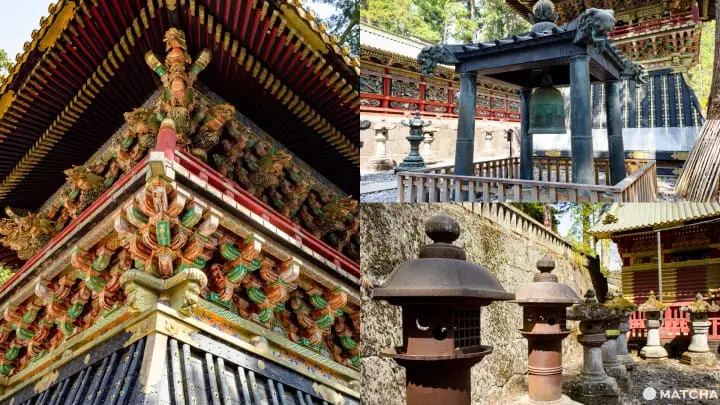
All along the route, you will spot various unique items. These include the koro and shoro (*2) used in rituals, metal toro (lanterns), the Holland Toro Lantern gifted to the Edo Shogunate by the Netherlands, and a hall with a dragon depicted on the ceiling; this dragon is known as Nakiryu, the "singing dragon," because of the way that sound reverberates in this hall making it seem that the dragon's voice can be heard.
*2: Koro/Shoro are mounts for drums and bells used to keep time.
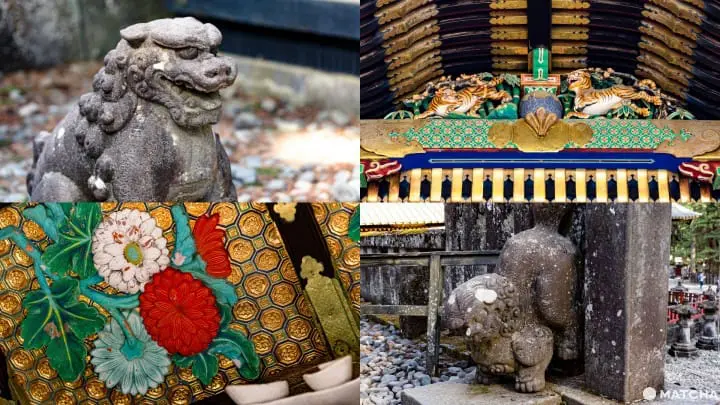
You might also spot unique, beautiful carvings and statues. From the shrine-favorite komainu to tigers and dragons to peonies, various animals and plants are hidden throughout.
Their elegance and comical expressions are sure to enrich your visit.
If you get a chance to visit the Toshogu, we recommend keeping your eyes open for all the small architectural details that make it such a precious place.
Hotels near Nikko Toshogu
Photos by masataka kougo
Original author: Keisuke Yamada






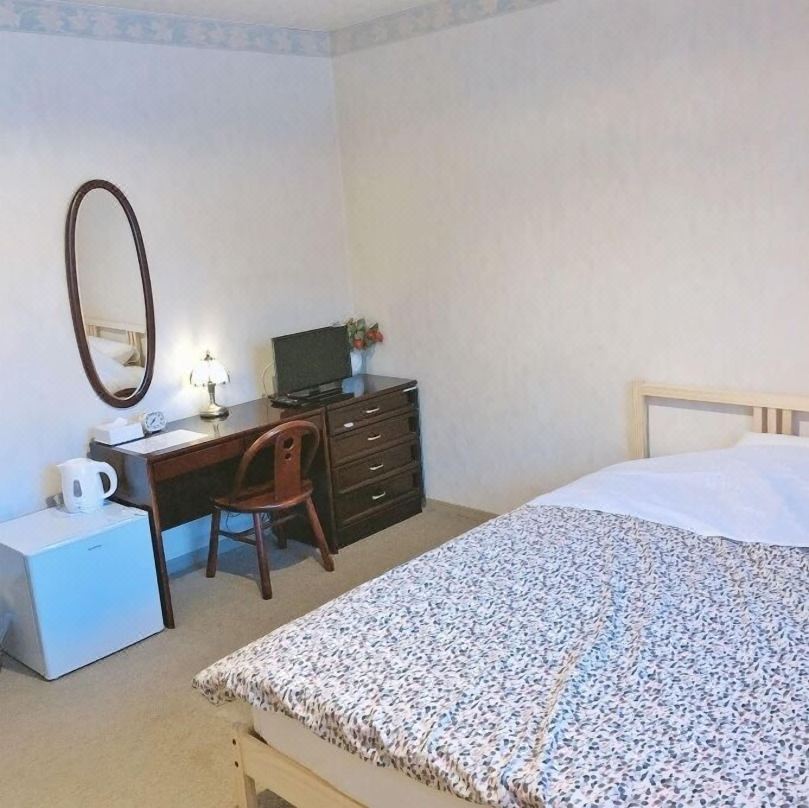
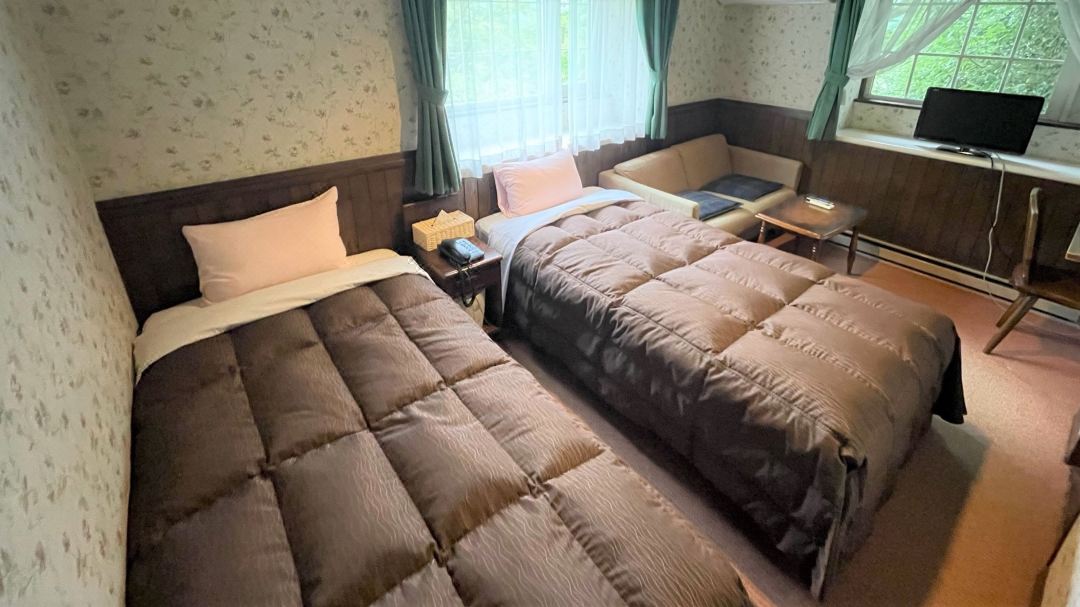







































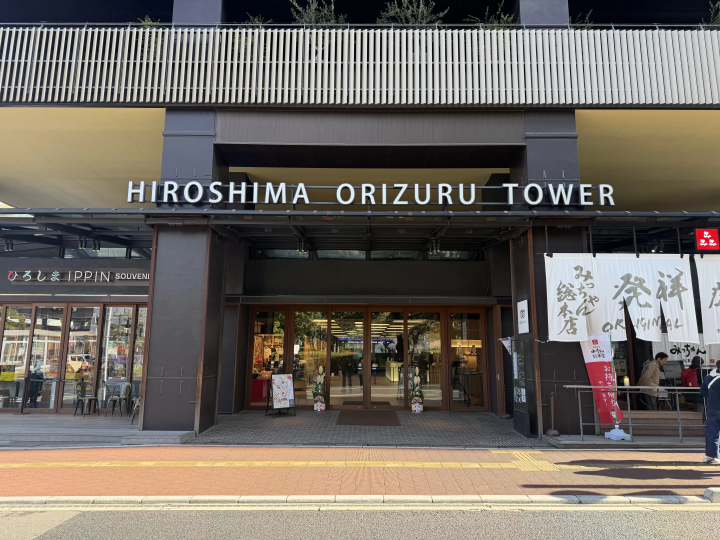
![[Coupons available] We're open even during the New Year holidays! We'll bring you information on our New Year's sale!](https://resources.matcha-jp.com/resize/720x2000/2025/12/26-254137.webp)
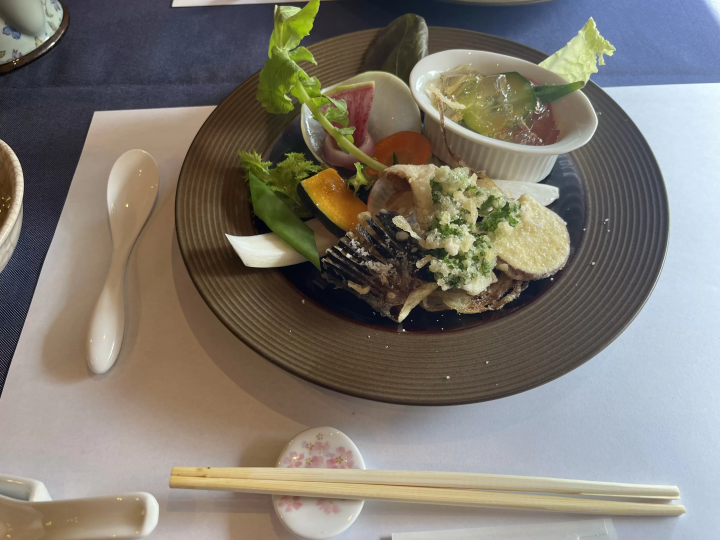
![[For beginners and debutants] Special feature on recommended ski resorts and ski tours!](https://resources.matcha-jp.com/resize/720x2000/2025/12/26-254120.webp)
